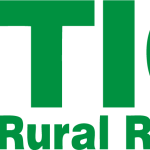
Soybean cyst nematodes (SCN) are a plant-parasitic roundworm that attack soybeans in Saline, Jefferson, and Gage counties. The pest is not new or unfamiliar to area farmers and agronomists. However, sometimes we get too comfortable with old issues. As a reminder, SCN is the #1 yield-robbing pest in U.S. soybean production.
Soybean cyst nematodes or SCN were found in 1954 affecting soybeans in North Carolina, but not found until 1986 in Richardson County, Nebraska. Nebraska was the last major soybean producing state to find SCN. A Nebraska SCN distribution study published in 1989 confirmed the presence of SCN in southeast Gage County in 1988. Today, SCN has been identified in 59 counties, including all counties in eastern Nebraska and as far west as McCook. I want to highlight a few resources available and management tactics to help control SCN. Let us use the same acronym, SCN, to remember the management steps: (S) soil sampling and free SCN analysis, (C) crop rotation, and (N) new/rotating soybean varieties and nematode-protectant seed treatment.
The first step is to take soil samples (S) in your fields like the process for soil nutrients at 6 to 8 inches deep. The best time of the year to soil sample is just after soybean harvest. This is the point at which SCN will be at their highest population. At our Extension offices in Saline, Jefferson, and Gage counties you can borrow a soil probe to sample for soybean cyst nematodes (SCN). We do have sample bags for free SCN analysis in our offices. The cost of the analysis is funded by the Nebraska Soybean Board and analysis is performed at the UNL Applied Soybean Pathology Lab in Lincoln. One reason I am writing about this is that farmers in Saline, Jefferson, and Gage counties have not been taking advantage of this opportunity compared to other farmers in Nebraska. Learn more about SCN sampling and links to more resources in a new CropWatch article written by my colleagues at https://cropwatch.unl.edu/plantdisease/soybean/soybean-cyst-nematode.
The second step, if SCN are found in your field, is crop (C) rotation or planting more non-host crops such as corn, wheat, and alfalfa. Most rainfed fields are in a corn-soybean rotation, so changing to a corn-corn-soybean, corn-soybean-wheat, or alfalfa will provide additional benefits. As a part of crop rotation, controlling winter annual weeds species that can serve as alternative hosts for SCN is important.
The third step is to select new (N) soybean varieties with SCN-resistance and rotate the sources of resistance. Most soybean varieties have the PI88788 single source of resistance, but some SCN can now reproduce or overcome this genetic resistance. The other main source of resistance is called Peking. Peking varieties no longer yield less compared to varieties with the PI88788 source of resistance. Additionally, several seed treatments are available to provide added protection. Please contact your local seed dealer on availability of varieties and seed treatments.
For more information about soybean cyst nematodes (SCN) and general inquiries about other agronomic resources from Nebraska Extension, feel free to contact me at or 402-821-1722. Know your crop, know your tech, know your bottom line at croptechcafe.org.


